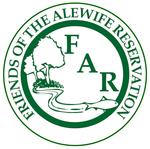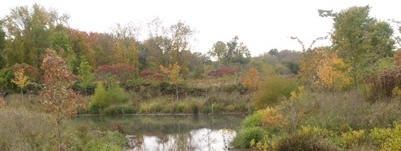Birding Trip This Saturday!
3:30pm - Alewife Reservation
John Sharp
co-sponsored by Friends of Alewife Reservation and Menotomy Birders
See the roosting of robins and starlings. If you come, you should wear good waterproof footwear and some reflective clothing, as we will finish at around 4:30 p.m. when it will be getting dark. There is no sidewalk and along the side of the road there is considerable snow, which will be melting all day Saturday as the temperature will get above 50F. There is not a lot of weekend traffic there, so this should not be a problem. Rain is a possibility and we will not cancel and reschedule unless it is actually raining at 3 p.m. Saturday. I was there today and it was a good show. There were over 1000 starlings and they all went down into the phragmites within just a few minutes before 4:30. It will likely be a bit darker Saturday than today, due to cloud cover, so they may well bed down somewhat earlier than today. The starling dance before roosting is called "murmuring".

Wildlife Specialist Speaks on Alewife Reservation's Wildlife
Wednesday, January 29, 7:00pm, at Lesley Univerity's University Hall, 2nd floor Amphitheater.
Join FAR on January 29th at 7 at Lesley University Amphitheater
to meet others who love Alewife Reservation and want to share many ways to steward and to educate about its rich biodiversity and wildlife. Sign up to be on the Board of Directors if you have time and background of environmental stewardship. Dave Brown, noted wildlife specialist in the Boston area will present a program on Wildlife at Alewife. He has reconnoitered the area for years and knows its habitat and ecological value. He also understands the 130 acre DCR managed Reservation as an entire ecosystem, which he calls the "Alewife Ecosystem". Despite over-development around and in the urban wild floodplain, the area functions successfully as a wildlife refuge for Belmont, Arlington and Cambridge and for the entire Mystic River watershed greenway from the Mystic River to Little Pond in Belmont, where otter peruse the banks of the North Trail's Little River to Little Pond, and deer, coyote, fox and mink can be found along with over 90 bird species.
Dave's website is http://www.dbwildlife.com.
For directions to Lesley, call, Richard Cranford, 617 349-8296.
For activities on the Alewife Reservation, call Friends of Alewife Reservation, 617 415-1884.
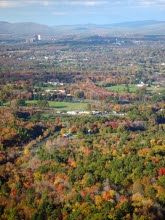
Groundbreaking Study on Massachusetts Forests
"A groundbreaking study released today by the Harvard Forest and the Smithsonian Institution reveals that, if left unchecked, recent trends in the loss of forests to development will undermine significant land conservation gains in Massachusetts, jeopardize water quality, and limit the natural landscape's ability to protect against climate change. The good news is that the research shows alternatives exist for protecting and enhancing vital forest benefits for people and nature." Read more with video on the Harvard Forest web site.
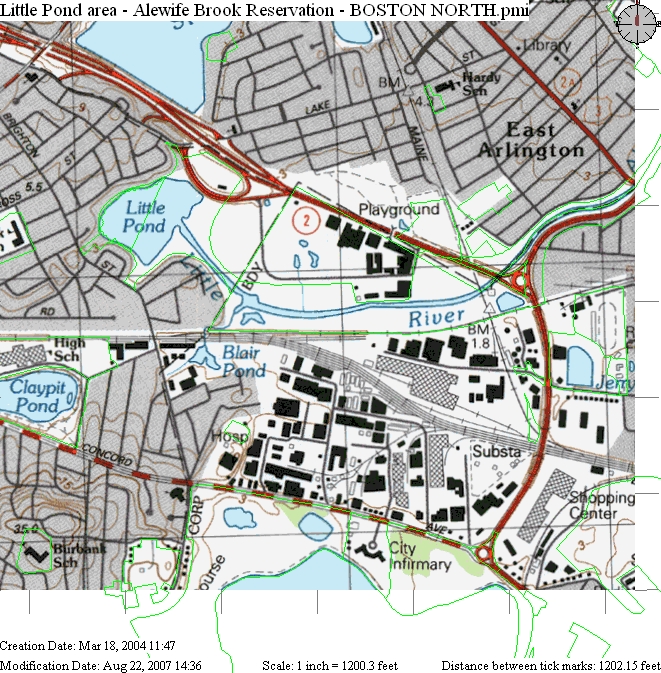
Uplands Geology Makes Development Difficult
"For centuries, the Alewife Brook Reservation and adjacent Belmont Uplands were protected from urban development by their special wetland hydrology and geology. Entrepreneurial farmers planted silver maples there in the last century in hopes of draining the area. The silver maple, Acer saccharinum, is able to tolerate short-term flooding; its shallow fibrous root system holds the soil together and its leaves transpire moisture, making the soil more absorbent of rainwater. However, thanks to natural springs, a very shallow water table, and a soil made up mainly of clay deposits, the Uplands experiences frequent, extensive floods, so that even these tough farmers failed to conquer the wetland." For more see page 9, "Lucia Lovison" in the Belmont Citizens Forum Newsletter.
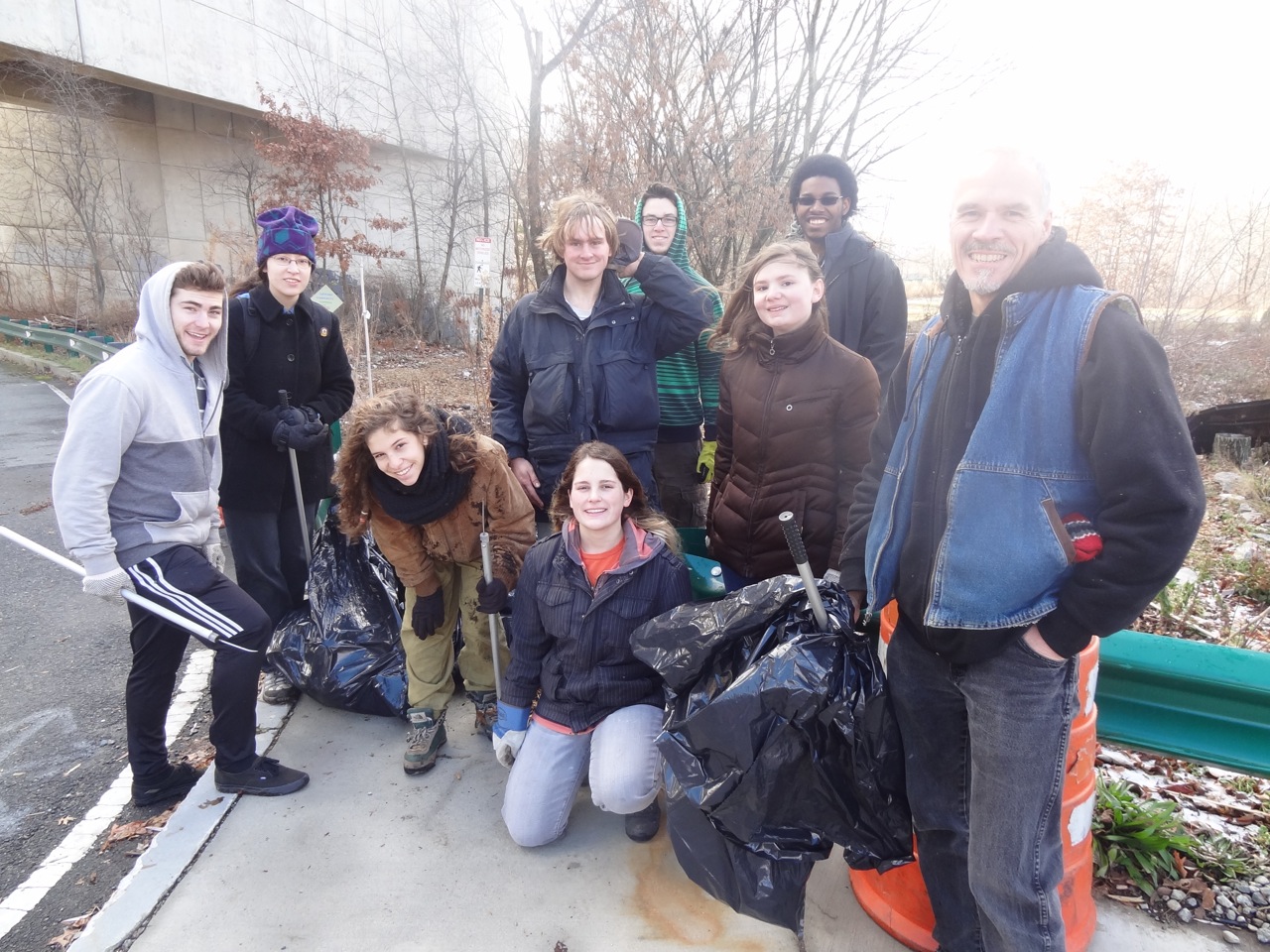
Lesley students and Friends clean up Alewife Reservation
Jesse Schuh
Today was an important day of picking up cubic yards of trash in the Alewife Reservation. Isaiah Carpenter-Winch and I laid out all of the tools and bags for the volunteers to utilize. Around 11 AM, Professor Amy Mertl of Lesley University arrived at the Alewife garden with a group of five volunteers. Some were students of Lesley and the Art Institute of Boston, while others had been invited by the volunteers and Walter from Friends of Alewife Reservation. After everyone signed in, I took the whole group down into the thicket of the Alewife Reservation where we would be working. Our first stop was at an abandoned homeless encampment, where there were used cups, cans, clothes, and blankets thrown everywhere. I had everyone in the group pick up the trash by using pointer tools, while I picked up some trash myself.
Read more here.
(Youth photo: Kelly Drinkwater, Michael Talbot, Jesse Schuh, Gina Giulian, Walker Panek, Walter Kittredge, AClegg, Isaiah Wench-Carpenter.)
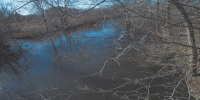
DIG BOSTON
Chris Farone
In their years-long mission to save Silver Maple Forestan idyllic and intensely biodiverse woodland straddling Cambridge and Belmont within the Alewife Reservation, they've run up against developers, the courts, and worse, high-ranking elected officials.
(full article) (Photo: Derek Kouyoumjian)
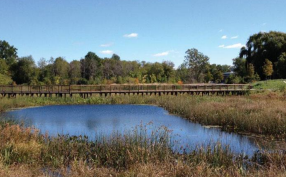
Beautiful day in the 60s
Julia
I haven't been in the Reservation for many years and was so amazed by this jewel of nature right in my neighborhood. I've spent many years driving to the Fells, as a caretaker of dogs and Dave's walk by FAR became my chance to enjoy nature.
I liked the information about the different trees: For example, the fact that finding black cherry suggests a settlement because it had desirable fruit and wood, and learning about the difference between the acorns of the white oak and red oak which affected the way squirrels and such would store it for use.
Also, the differences between the grey and red fox. As a cat lover, I thought it was interesting that one of the differences between grey and red is that the grey fox climbs on branches, much like a cat. Also appreciated the distinction in the way a field mouse and vole look for food--the mouse scurrying on top of the snow, while the vole tunnels underneath.
Read more.
Study to assess Cambridge's climate change vulnerability
Erin Baldassari
We're looking at this as an extension of traditional emergency preparedness planning. In the past, we could assume weather patterns could be relatively stable, but with climate change that's not true anymore," Bolduc said. "But, it's also about making the city more resilient to some of these events."
Read more.
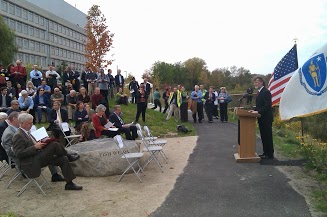
Environmental Pride of the City- New Wetlands
The restored wetlands purify to protect the waterways and maintain wildlife on the 120 acres of DCR parkland. To protect an environmental investment of more than $140 million for marsh and storm water infrastructure, the silver maple forest of seven acres upstream in Belmont should remain intact, as the woodlands' flood retention filters and absorbs pollutants before reaching the new basin. Removing the forest for 300 units on "the Belmont Uplands" could devastate the new Cambridge wetlands because of its adjacent island location. Read more. (photos)
Invasive Species Removed at Wetland Meadow
Two western meadow sections of phragmites removed. This fall, we will try to continue to prevent these noxious invaders from taking over the 3 acres of miraculous open meadow growth, generously planted by those Bulfinch engineers designated to clear the area after the acres of asphalt from the old ADL parking area were removed. Whoever chose the seeds to replant the open space which may be Cambridge's largest meadow, was very generous with the diversity of New England native flowers and grasses, and which has now been assessed to be over 384 species by botanist Walter Kittredge. We are most pleased with this assessment. (full article) (photos)
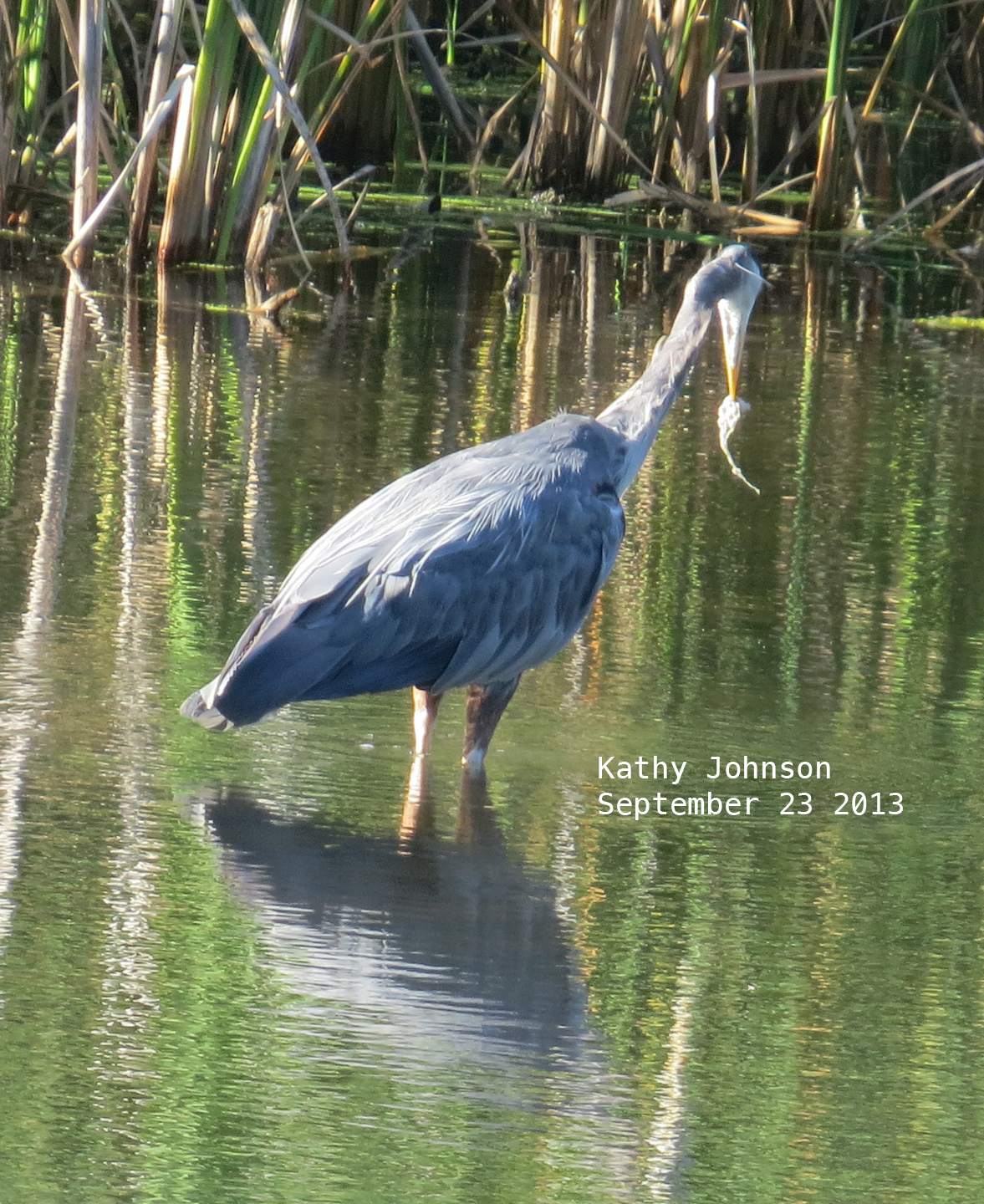
Young heron hampered with plastic or other material around beak at Yates Pond - November 9, 2013
Reported by Kathy Johnson, observer at Yates Pond: City was requested to assist and the plastic was removed from the beak.
High Electromagnetic Fields Threaten Alewife nature areas
Cell phone towers are reported to have a destructive effect on wildlife and especially on bees and migrating birds. They create electromagnetic fields (EMF) which disrupt bees' ability to orient themselves and return to their hives (therefore believed to be partially or fully responsible for the dramatic loss of bees in the past few years) and they are found to disrupt the navigation system of migrating birds. A high powered Verizon tower has been proposed for Sancta Maria Hospital. Read more.
Floodplain Description from 2002 DCR Master Plan
Department of Conservation and Recreation (DCR)
MAPPING PROJECT:
For the past 20 years development activities have proceeded in the watershed without updates of the 1982 floodplain lines delineated by the Federal
Emergency Management Agency (FEMA). The MDC (DCR) has identified the need to verify those lines throughout the Alewife area 100- and 200-year
floodplain. The MDC (DCR) hired Applied Geographics to produce updated and
corrected floodplain maps for all floodplains around the Alewife Reservation, Alewife Brook, the Mystic River, Fresh Pond, and Spy Pond. These
new maps should advance understanding as to why so many properties outside the 1982 delineated floodplain regularly have flooding problems.
This is one helpful step of many that are needed to thoroughly understand the complex flooding issues in this watershed. The 2010 FEMA map has
extended the Alewife floodplain.
(see FEMA Floodplain Maps and
read more)
See FriendsOfAlewifeReservation.org for more articles.
Volume 1, Number 1
Wildlife Specialist Speaks on Alewife Reservation's Wildlife
Young heron hampered with plastic or other material around beak at Yates Pond
Saturday, December 21, 3:30pm
Birds of the Silver maple forest: Christmas air show with Menotomy Birders
Saturday, December 21, 7:00pm
Join us to learn many ways to steward and to educate about Alewife Reservation's rich biodiversity and wildlife.
Sunday, December 29, 1:00pm
Nature-Poetry Walk at Alewife Reservation - Anne Marie Lambert
Saturday, January 4, 2014, 10:00am
Walter Kittredge and Nature Journaling
Wednesday, January 29, 2013, 7:00pm
Wildlife Specialist Dave Brown Speaks on Alewife Reservation's Wildlife
Send us your photographs, drawings, experiences, and poetry
Forward this message to a friend!
Right now, see the wildlife-rich North Trail of Alewife Reservation. (more information)
186 Alewife Brook Parkway, Suite 304
Cambridge, MA 02138
617-415-1884
